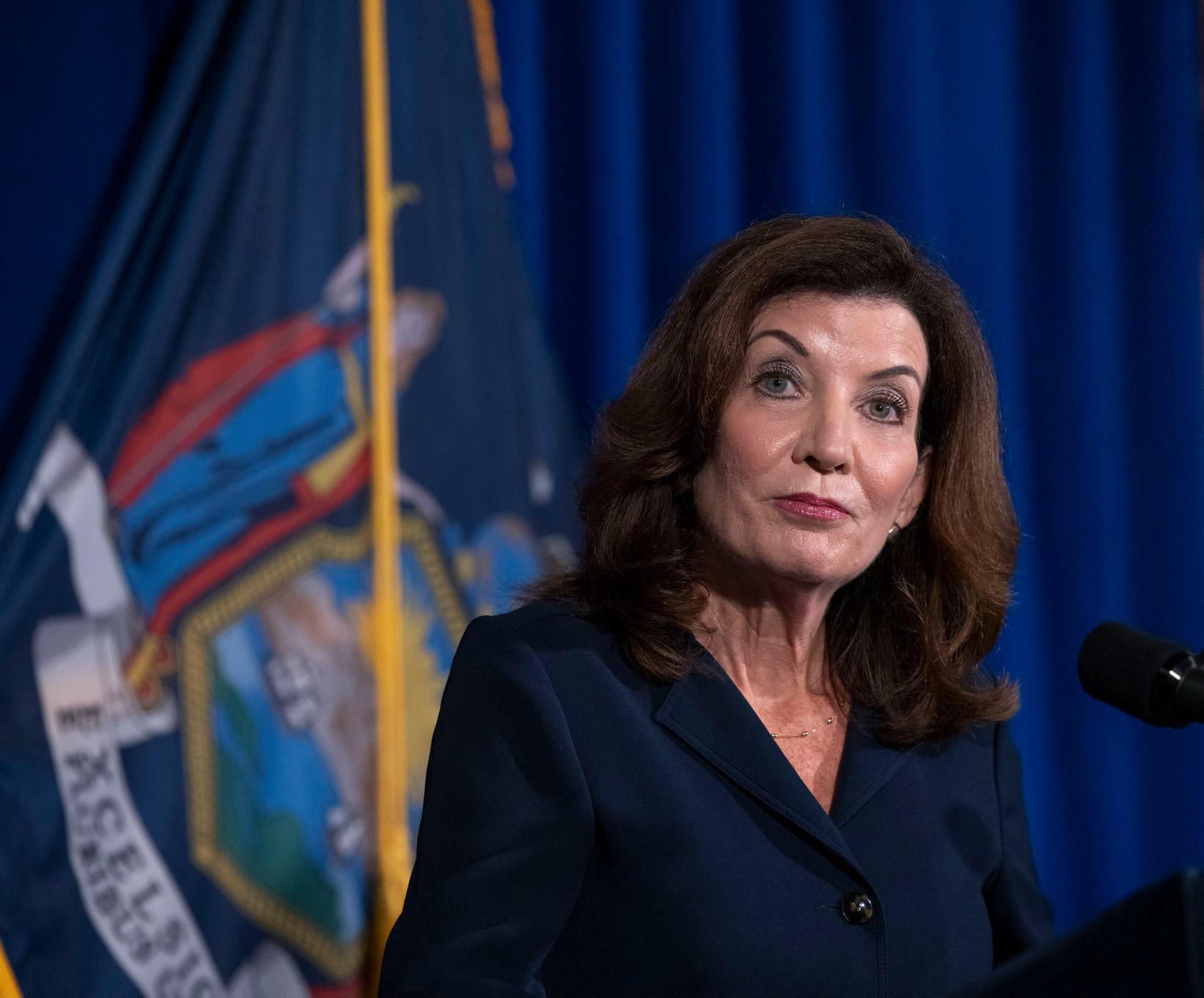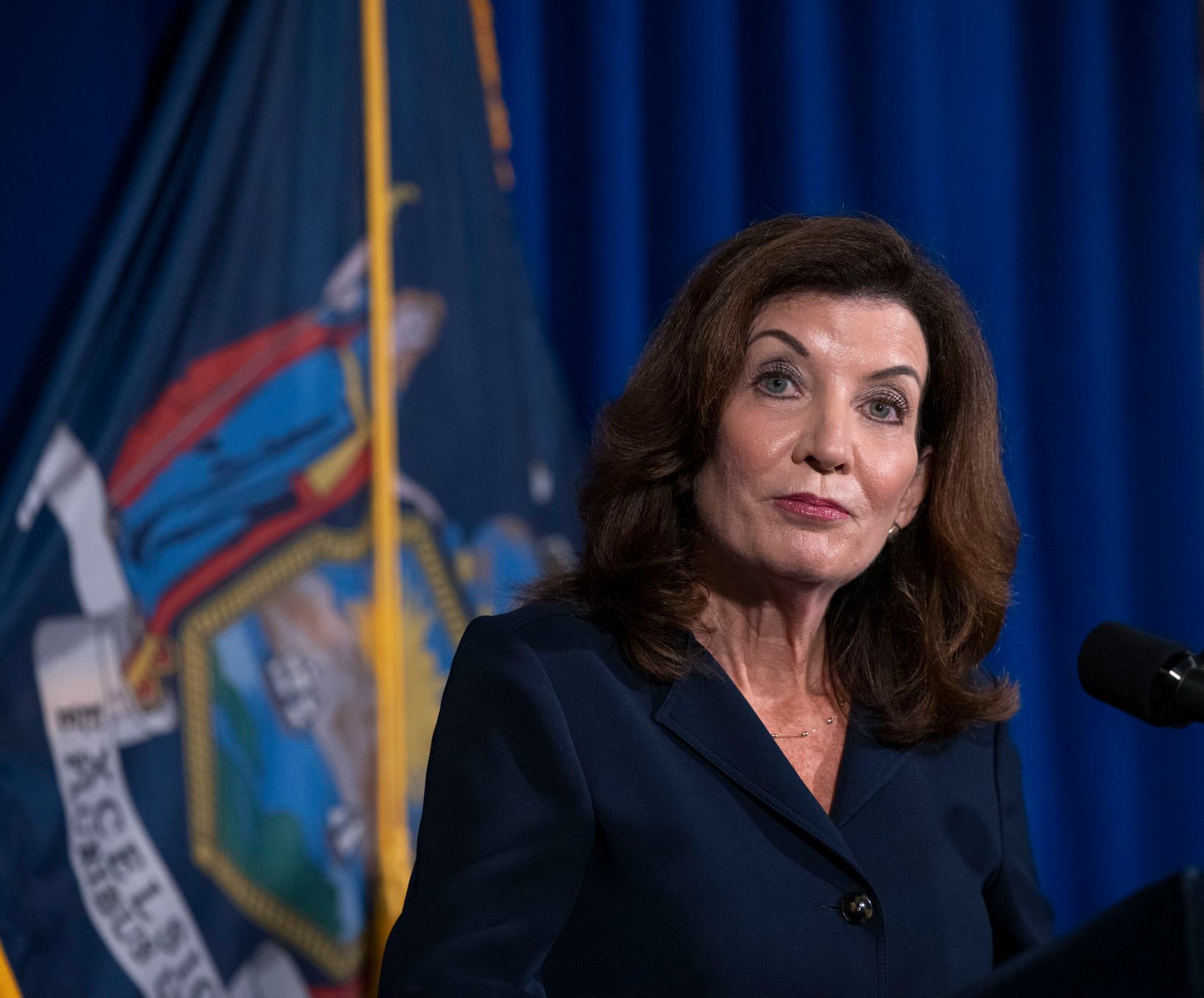Vacancies and Zombie Commissioners Leave Opening for Parole Reform in New York
Upcoming appointments by Governor Kathy Hochul could push New York’s parole board away from a culture of perpetual punishment
Nick Pinto | February 9, 2022


This article was produced as a collaboration between Bolts and New York Focus.
Five years ago, a social worker who believed in rehabilitation joined the New York State Board of Parole. During her time on the board, she voted to grant parole at a higher rate than the other members — but found herself repeatedly isolated on panels and outvoted.
“I wanted to look at who the person was today, and what their transformation has been, rather than just focusing again at the crime that they were already convicted for, which they can never change,” Carol Shapiro told Bolts and New York Focus.
Shapiro resigned in 2019, worn down and discouraged by the difficulty of shifting the board’s approach. The board, which considers thousands of parole applications each year, has for decades been dominated by a philosophy of presumptive detention, helping drive New York prisons’ exploding population of elderly long-term detainees.
Shapiro’s appointment came as part of a broader attempt to reorient the board away from that philosophy. The parole release rate nearly doubled by the next year—helping thousands more gain release—though it has since receded and the number of cases heard has dropped.
Now, New York reformers have another chance to transform the Board of Parole. In her inaugural State of the State address last month, New York Governor Kathy Hochul announced that she will nominate four more members, bringing the board—chronically understaffed in recent years because former Governor Andrew Cuomo declined to fill vacancies—to its full complement of 19 commissioners.
The announcement was received with cautious optimism by proponents of parole reform, who have complained for years that the board’s understaffing leads to unsustainable caseloads and hurried parole reviews. Almost nothing is known about the governor’s process for identifying candidates, and her office did not respond to questions for this story. But if Hochul picks commissioners with perspectives and backgrounds similar to Shapiro, it could presage a new, more decarceral era for the board.
“If you’re starting from scratch, trying to figure out who should be a parole commissioner,” said Steve Zeidman, director of the Criminal Defense Clinic at CUNY School of Law, “you’d say this has to be someone with experience in therapeutic and rehabilitative services, someone with experience with people who are trying to address past mistakes and problems.”
But Shapiro’s tenure and a review of how the board functions shows that, even if Hochul does choose to appoint reform-minded commissioners, they will likely face massive obstacles: political pressures, antiquated technology, minimal training, and an entrenched culture, operating under a vague statutory mandate—dynamics that some lawmakers are pushing to reform through legislation this year. They will also likely face tensions with their colleagues; a new analysis, shared with Bolts and New York Focus, shows for the first time how some commissioners have remained more resistant to release than others.
“If you’re going to change parole in New York, there’s no question that having different people on the board is a necessary part of that,” said Jennifer Scaife, executive director of the Correctional Association of New York, an organization that monitors the state’s prison system. “At the same time, putting different people in the seats isn’t going to be sufficient on its own to make real change.”
—
For decades, a seat on New York’s parole board was regarded as a patronage position, with nominations subject to the impenetrable legislative horse-trading that characterizes much of Albany politics. The result was a board that largely reflected the white, conservative, upstate legislators who controlled the New York State Senate, and shared that group’s tough-on-crime approach.
“People might say, ‘Oh, you have to let ’em out, you have to let them out, that’s the only thing that matters,’” James Ferguson, who was appointed to the board by Governor George Pataki, told a New Yorker documentary crew last year. “No, it’s not. I have members of the public who feel that the component of retribution has not been satisfied.”
After a 2016 New York Times analysis that found stark racial disparities in the decisions of the then-overwhelmingly white board, and under pressure from parole-reform advocates, Cuomo appointed new classes of commissioners, more diverse in race and professional background than their predecessors, in 2017 and 2019.
The new appointments, along with minor regulatory changes, helped increase the release rate. Rates leapt from 30 percent of decided hearings in May of 2017 to 54 percent a year later, according to data from the Parole Preparation Project, a non-profit group that helps incarcerated people serving life sentences apply for parole. But the rate dipped to 38 percent last November and 45 percent in December, the last two months for which statistics are available. The board decides many hundreds of hearings a month, so that fragile increase has outsized effects on New York’s prison population.
And racial disparities persist. Between 2018 and 2020, the board granted parole for 46 percent of white people who sought it, and only 39 percent for people of color, a report from the advocacy group FWD.us found. From 2017 to 2019, an incarcerated person from Schuyler County, in New York’s Finger Lakes region, was twice as likely to receive parole as someone from the Bronx.
In an email to New York Focus and Bolts, Thomas Mailey, a spokesperson for the Department of Corrections and Community Supervision, within which the Board of Parole is housed, did not address questions about racially skewed parole outcomes. He has in the past criticized similar findings for failing to account for more detailed factors such as applicants’ disciplinary records. But any effort to evaluate that claim, or anything else about who receives parole in New York, is hampered by the board’s extreme opacity. The board’s last report on its activities was published in 2017. It publishes a monthly schedule of hearings and decisions, but nothing that would allow an analysis of patterns in parole outcomes or in the decisions of individual parole commissioners.
But a previously unreported analysis commissioned by the Parole Preparation Project and shared with Bolts and New York Focus sheds rare light on these internal dynamics. It combines published parole decisions with parole hearing schedules, tying specific commissioners to specific outcomes. The data covers the period between January 2018 to January 2020, and nearly 20,000 parole hearings. The data is inevitably limited: It can only track the aggregate decisions of the three-person or two-person panels, not the votes of the individual commissioners themselves. Nevertheless, the report shows that parole rates vary significantly depending on who hears the application.
Shapiro sat on panels that granted release in more than 61 percent of hearings decided; this corresponds to more than 1,200 incarcerated applicants granted parole. She was the only commissioner whose panels granted applications significantly more than half the time.
A lifelong prison reform advocate with a background in social work, Shapiro was an atypical appointee who says she approached her work on the parole board as a reformer. (The Parole Preparation Project’s statistics likely understate Shapiro’s propensity to support parole applications since the study was only able to measure a panel’s aggregate decisions. In hearings where Shapiro supported release but was outvoted, the study counts that as a denial.)
Joseph Crangle, Charles Davis, and former commissioner William Smith Jr. sat on boards with just over 50 percent release rates.
At the other end of the spectrum, panels that included Ellen Evans Alexander, a former prosecutor and Rhode Island prison administrator appointed to the board in 2012, released fewer than 41 percent of parole applicants. Commissioner Marc Coppola, a former Republican state senator, is only slightly more lenient, sitting on panels with a release rate below 44 percent. Advocates have tried to remove Coppola from the board for years over conduct they describe as unprofessional.
The gap between an approval rate of 41 and 61 percent may seem marginal, but projected onto the board’s decisions over the period studied, it would mean the difference between release and incarceration for more than 3,000 incarcerated New Yorkers.
Still, Shapiro says she wanted to see more change. Reflecting on her tenure, which ended in 2019 when she quit in frustration, Shapiro says a host of factors, from hurried schedules to an absence of training, all hindered her efforts to persuade fellow commissioners. She struggled to get them to see beyond someone’s underlying offense. Shapiro also suspects, though she is careful to be clear that she cannot prove it, that in some instances the board’s particular commissioners are cherry-picked for a panel in order to achieve a desired outcome. “With the really heinous high-profile cases, I think there is some thought given to the composition of the board,” Shapiro said. “There were a couple times when I wasn’t supposed to be on a board and then all of a sudden I was.”
Mailey, the DOCCS spokesperson, flatly denies that panel composition is ever deliberate. “The Panels are selected at random,” he wrote in response to questions. “To insinuate that an attempt to manipulate the process or a decision is insulting.”
Shapiro isn’t so sure. She suspects she was sometimes put on panels because the board’s leadership was confident the other two commissioners would vote to deny parole, saying, “I was the token liberal to show the advocacy community that this person got a fair shot.”
—
Vacancies are only the tip of the iceberg when it comes to the parole board’s bizarre staffing issues. Seven of the 15 current commissioners have exceeded the duration of their appointments without being renominated or going through another legislative confirmation process. They exist in a sort of bureaucratic gray-zone, continuing to draw salaries and performing the official work of commissioners, even as their official mandate for doing so has lapsed. They have collectively worked for thirteen years beyond the limited mandate they were given by the people’s representatives. Tina Stanford, the board’s chairperson, has been leading the body for three years past the expiration of her term.
This peculiar state of affairs is possible because nothing automatically triggers new hearings for parole commissioners when their term expires. Nobody but the governor can call such hearings. Nothing prevents zombie commissioners from carrying on without a legislative mandate for as long as they please unless the governor intervenes—which Cuomo chose not to do.
When lawmakers get a say, it has historically served to empower legislators allied with law enforcement associations who press nominees for assurances that they will be cautious about granting parole, giving most weight to the gravity of the original offense and the wishes of crime victims.
Commissioners seeking reappointment have personally canvassed support from these legislators. Some go so far as to contribute to their campaigns. Coppola, for instance, has given $550 to the election campaigns of Patrick Gallivan, a Republican state senator who holds the fate of commissioner candidates in his hands as a member of the Senate Committee on Crime Victims, Crime and Correction. Gallivan told Bolts and New York Focus that Coppola’s donations had no influence on his support.
Gallivan is vocal about what he wants from the board. He says it is inappropriate for commissioners to serve with an avowed decarceral mission. In 2018, he issued a press release calling a panel’s decision to grant parole to a 70-year-old man who served 45 years in prison for killing a police officer “indefensible and an affront to law-abiding citizens.”
But in recent years, public opinion on mass incarceration has shifted, and decades-long prison sentences have become a campaign issue that reform candidates are willing to run against. Confirmation hearings for parole board members have also presented an opportunity for reform-minded legislators and advocates to challenge the presumption of perpetual incarceration.
In 2019, parole reform advocates had enough allies on key legislative committees to scuttle the nomination of Richard Kratzenberg, who had a long career in corrections and community supervision. During Kratzenberg’s confirmation hearing, he emphasized the significance of the original crime in deciding who should be granted parole. Kratzenberg’s nomination never made it out of the corrections committee, and Governor Cuomo later withdrew his name. Cuomo never nominated or renominated another parole commissioner.
“The governor’s office doesn’t want to be publicly humiliated by having one of their nominees not be reappointed,” said Michelle Lewin of the Parole Preparation Project, one of the groups that lobbied against Kratzenberg’s nomination. “They don’t want to deal with that process of having their commissioners be questioned by the legislature and have to be recertified for a position that many of us are questioning whether they’re qualified for to begin with.”
—
This year, advocates for reform are pushing to change the rules that govern the Board of Parole and guide commissioners, arguing that even reform-minded commissioners will struggle to make significant changes in the absence of structural changes.
The Fair and Timely Parole Act would eliminate parts of the current statute, often cited in denial decisions, that emphasize the severity of the crime for which applicants were sentenced, and it would add language forcing commissioners to consider “evidence of rehabilitation and reform” in their decisions. The legislation faces long odds this session, though Brian Benjamin, now Hochul’s lieutenant governor, was a co-sponsor of the bill when he was still in the legislature last year, giving proponents some cause for optimism. The governor’s office did not respond to requests for comment.
Legislative clarity would help nudge the board towards a presumption of release for incarcerated people who are eligible for parole and a low risk for recidivism, but it’s unlikely to revolutionize parole in New York on its own. Increasing the maximum size of the board beyond 19—the New York State Bar Association has recommended a 30-person board—would give commissioners more time to actually consider each case. So would upgrading the board’s antediluvian technology, which relies almost entirely on paper records and fax machines. Commissioners currently receive parole applications, which often fill several file boxes, only a day before interviewing applicants. Professional training for commissioners would help, too, as would greater transparency from the board, reform advocates say.
Hochul’s commitment to fill the four vacant seats on the Board of Parole is already a departure from her predecessor. But her willingness to embrace broader parole reform remains uncertain.
The first test may well be who she appoints to the board. It’s currently unclear who or what will guide those decisions. The governor’s office did not respond to questions about what experience she is looking for, what process she is using to identify candidates, and who she is consulting.
Parole reform advocates hope for new commissioners who shift the board’s focus from the crimes that landed people in prison to the changes and growth they’ve experienced by the end of their sentence.
“There are so many factors that contribute to parole being the broken system that it is in New York today,” Lewin said. “But there’s no question: Getting people on the board who understand how to actually talk to people, who understand that the 70-year old sitting in front of them is more than just the crime he was convicted of as a teenager, who aren’t guided by pressure from politicians or police lobbyists—that’s a huge piece of this.”


